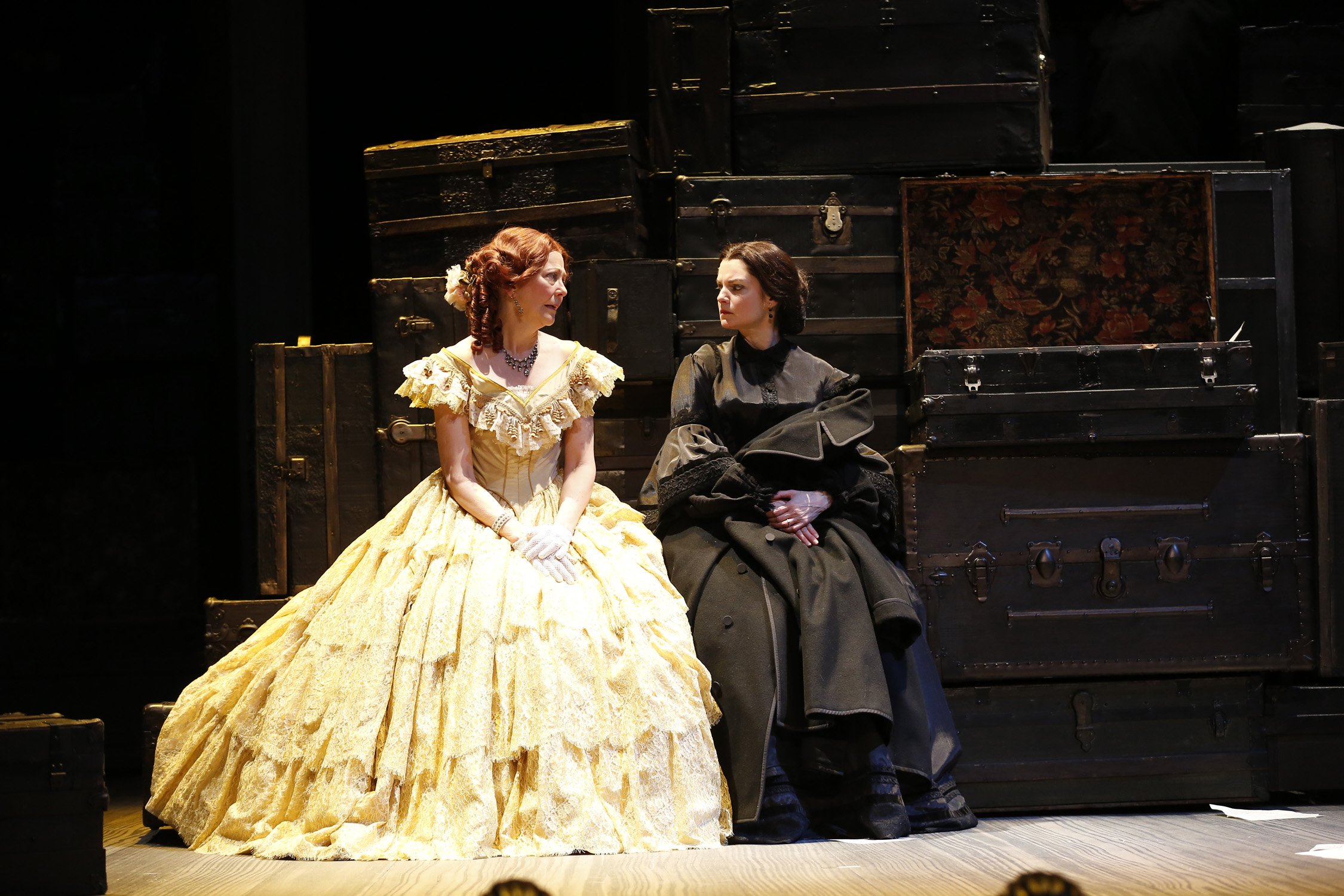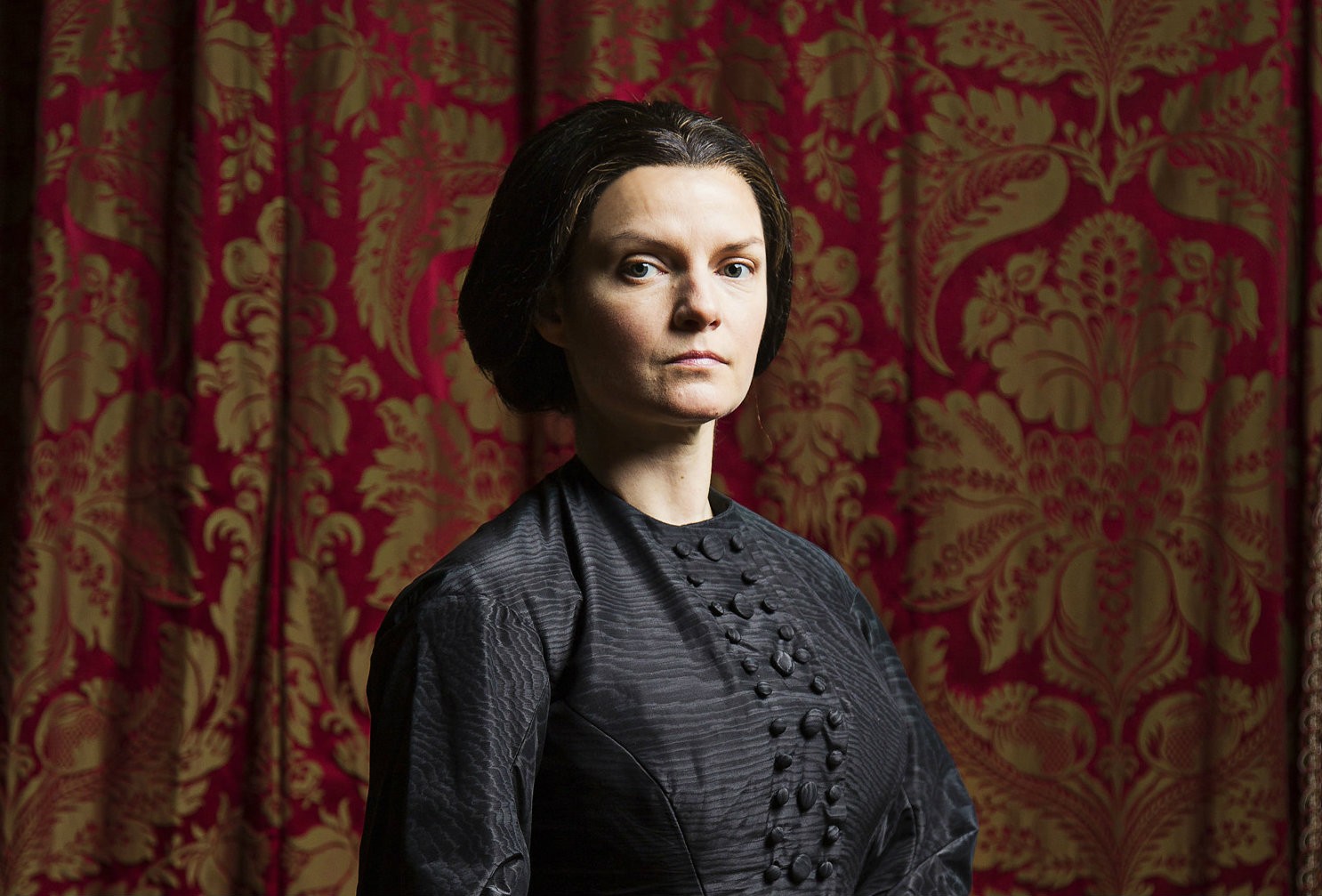
Big Dresses and Wilder Crowds: Theatregoing in Lincoln’s Time
Theatre has changed since the Lincoln family and thousands of others attended performances at Ford’s in the 1860s. What makes theatre of the 1860s and today so different and also similar? The following is what our exploration showed us.

Going to the theatre has been a favorite past time for Americans since the early 18th century. The earliest playhouses were simple brick buildings set with a permanent proscenium arch and no curtain. By the 1860s, theatre had changed in both design and content. Playhouses were more elaborate in design and included an adjustable proscenium, large curtains and elaborate furnishings to give the impression of luxury.
Dressing for the Theatre: What was 1860s style?
Erika: Fashions of the 19th century were just as elaborate as the theatres themselves! Men and women sported the latest styles from “across the pond,” following whatever the Europeans were wearing.
First Lady Mary Todd Lincoln was known for her sense of style, often inspired by Empress Eugénie of France. Materials like wool, silk, lace, taffeta and cotton were used to build clothing for both men and women of the 1860s. Men of stature, like President Lincoln and his cabinet members, would typically have worn long coats called tailcoats (short at the waist, longer over the back) and cravats (loose neckties) for fancy dress occasions like formal dinners or balls. For the theatre, and for typical everyday wear, frock coats were likely seen on gentlemen in attendance.

On the night that Lincoln attended Ford’s Theatre, he wore a Brooks Brothers coat, custom made with a special hand-embroidered silk lining featuring an eagle carrying a banner that read, “One Country, One Destiny.” Lincoln’s signature top hat, along with bow ties, gloves and a walking cane, might have completed this look.
Sara: As you can imagine, comfort wasn’t the key in the 1860s. Attending the theatre was a social event where you intended to be seen! Just look at these dresses from Lincoln’s 1861 inaugural ball. First Lady Mary Lincoln even wore this fabulous velvet cape to Ford’s.
In 1976, the Fashion Editor of the Washington Star newspaper (now out-of-print) wrote about what kinds of outfits women in Washington would have worn to the 1863 opening of Ford’s New Theatre.
She wrote:
The typical silhouette was the crinoline. Clothes worn by women at that time wouldn’t find a home in many closets today. Getting through doorways was often a problem. Dresses with five flounces worn over the horsehair of the supporting skirt, or the cage or hoop of steel springs that extended the skirts helped produce the ‘female fainting syndrome’ wide-spread at that time.
Erika: Ladies of the 1860s donned dresses that included large skirts and bodices that made the waist look small. Those large skirts were built by layering fabric over a crinoline cage frame that was often very heavy. Often these wide skirts were too large to fit through doors, making it difficult to maneuver tight spaces. A bodice waist and a wide neckline were typical of ladies’ evening wear. Fringe, braid, pleated fabric, ruffles and lace were used to emphasize luxury and status. First Lady Mary Lincoln was known to stay on top of the trends and would often be seen in beautiful dresses built by her dressmaker and friend Elizabeth Keckly.

In contrast, Ford’s Theatre today doesn’t have a dress code. Our patrons usually dress in business casual attire or “Sunday best” for younger patrons. However, we’d rather have a patron come in a T-shirt and jeans than not at all.
What was theatre like for audiences of the 1860s?
Sara: Theatregoing really expanded as an entertainment in the 1860s. Going to the theatre was a social gathering where many people met up with friends to socialize, not necessarily to watch the performance. It really was typical for audiences to be rambunctious, hissing, chanting or at worst, even throwing things or fighting. Ford’s Theatre was no exception. On the night that John Wilkes Booth assassinated President Lincoln, Ford’s was packed to the brim with about 1,700 lively and probably rowdy patrons! The orchestra section alone could seat more than 600 people!
Erika: Theatres were places people could forget their everyday lives and concerns—especially important for those in the Washington City of the 1860s, who were living through a period of war. During that time, Ford’s Theatre was an opulent venue that gave the impression of finery and elegance, a beautiful escape from reality. You can learn more about Ford’s Theatre’s operation history here.
When I go to the theatre today, I like to stay immersed in the show as if I’m living the adventure with the characters. I’m not sure I would have enjoyed the 1860s atmosphere in the same way!

Sara: Some of my favorite moments at the theatre are when audience members react—getting to hear kids giggling during The Wiz or teenagers gasp when the Gentleman Caller flirts with Laura in The Glass Menagerie. I also love knowing I’m surrounded by people who are as engaged in the show and enjoying it as I am myself. I think that being able to experience a play in the 1860s would be an incredible experience—especially if I got to sit in the least-fancy, loudest part of the theatre, the Family Circle.
Though many things have changed in theatre etiquette and fashion since the 1860s, Ford’s Theatre remains a place where people can gather to enjoy a performance, share ideas and fashion.
Learn more about the history of Ford’s Theatre in our museum, and join us for a show as a 21st-century audience member sometime soon.
Additional Resources:
- Vintage Fashion Guild
- Victorian Fashions (Historical Emporium)
- 19th Century Theatre (Britannica)
- 19th Century Theatre (Santa Monica College)
Erika Scott Is Artistic Programming Manger. Follow her on twitter @Musiqal_onE.
Sara Cohen is former Marketing and Social Media Manager. Follow her on Twitter at @SaraECohen.

